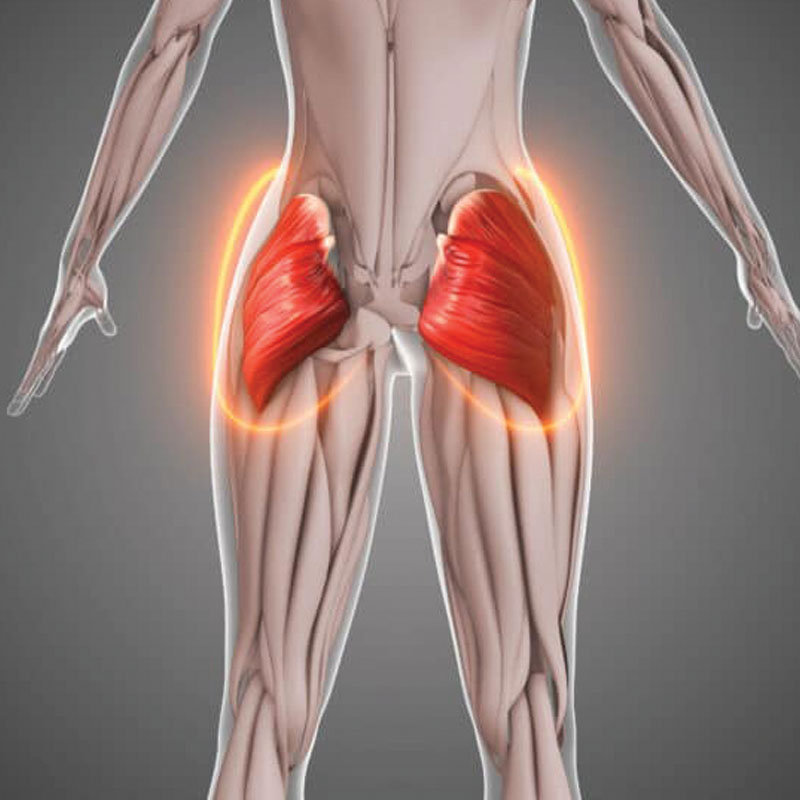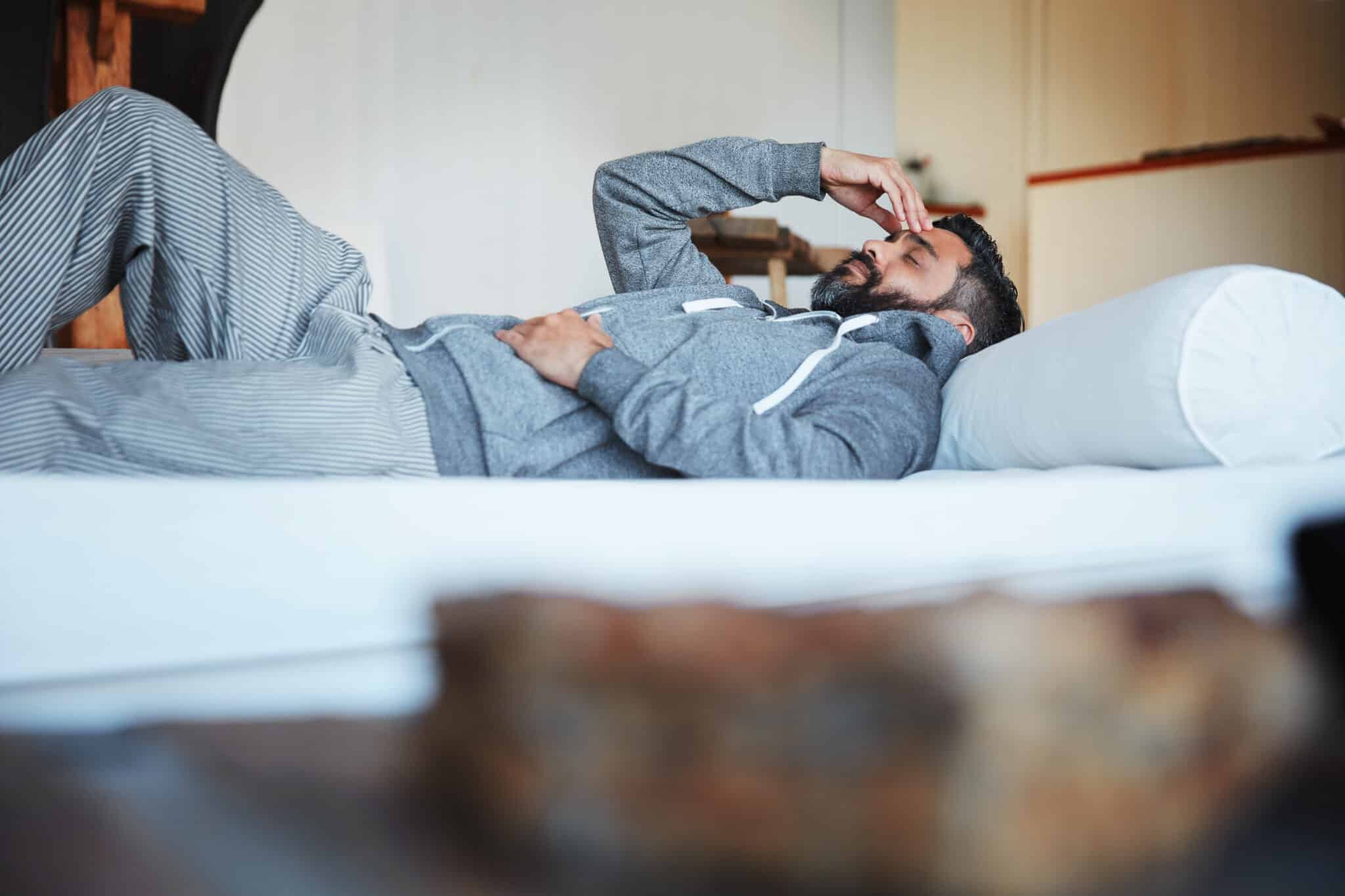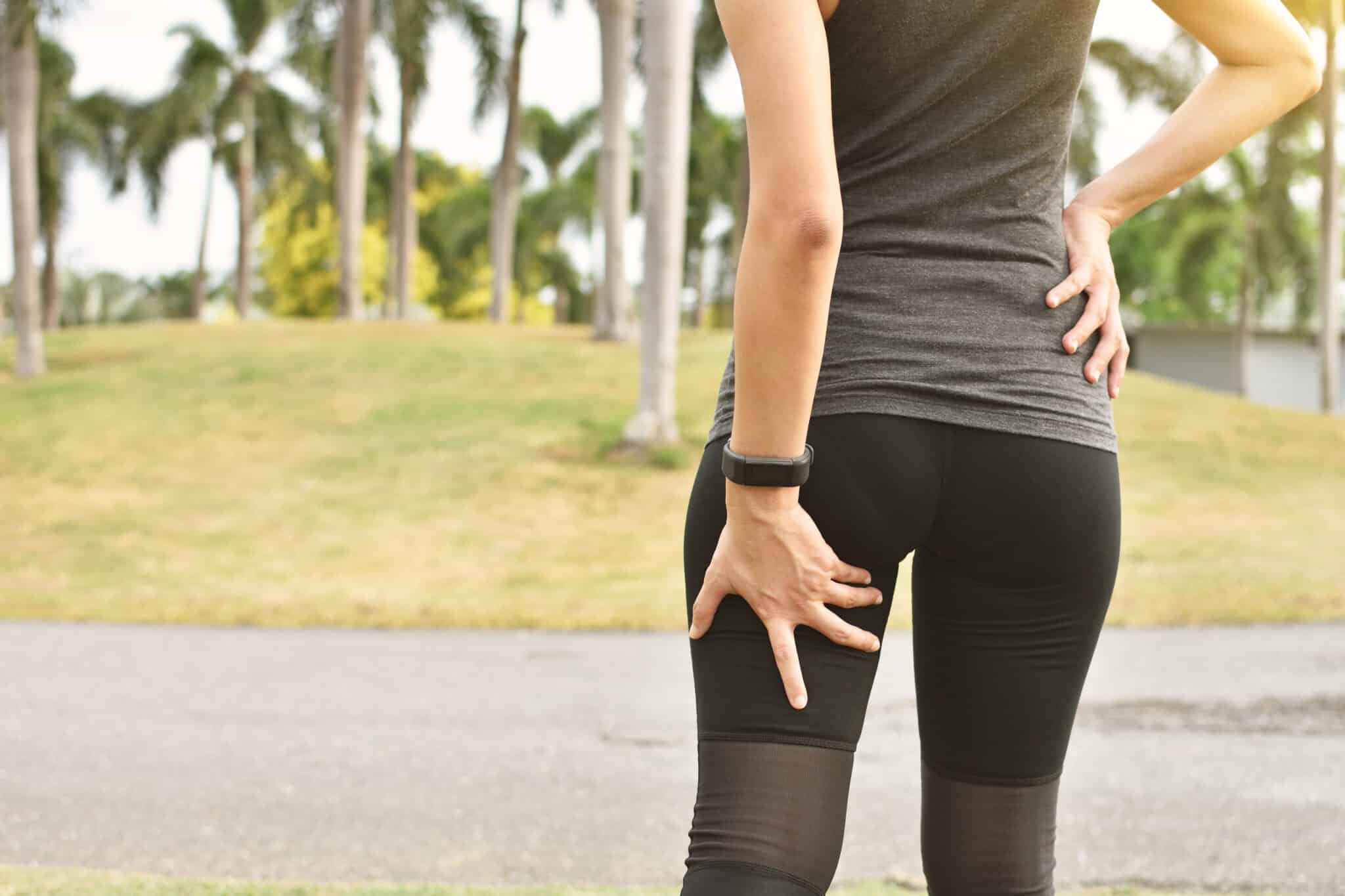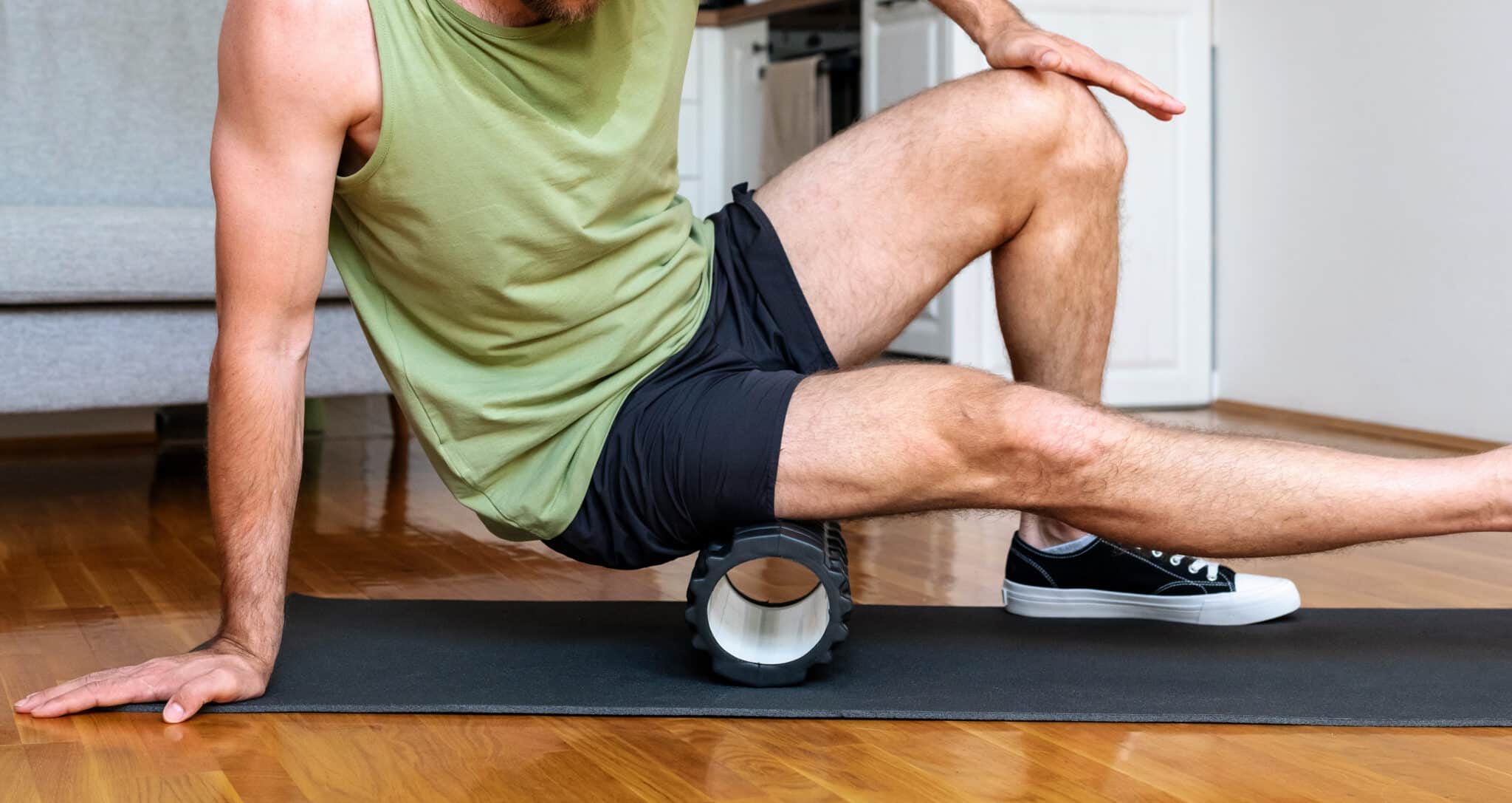Glute Strain – Symptoms, Causes, and Treatment Options
A glute strain happens when the muscles in your buttocks (gluteal muscles) are overstretched or torn. This condition can cause sharp pain, stiffness, and weakness that affects how you move, sit, or exercise. Many people notice it after sports, heavy lifting, or sudden awkward movements.
Many people with a glute strain find relief and recover faster with physiotherapy for glute strain, which helps reduce pain, restore mobility, and strengthen the glute muscles to prevent re-injury. Acupuncture for glute strain can relieve discomfort, improve circulation, and promote natural healing, while massage therapy for glute strain can release tight muscles, ease tension, and speed up recovery, of glute strain. Together, these services provide a supportive and effective approach to getting you moving comfortably again.

Overview of Glute Strain
A glute strain is an injury to one or more of the three gluteal muscles: the gluteus maximus, medius, or minimus. These muscles are key for standing, walking, running, climbing stairs, and stabilizing your hips and lower back. A strain happens when the muscle fibers are stretched too far, leading to microscopic tears or, in more severe cases, larger tears.
Glute strains are relatively common in athletes who sprint, jump, or play sports involving sudden direction changes, such as soccer, football, and basketball. They also occur in everyday life—for example, slipping on stairs or lifting a heavy box incorrectly. While exact prevalence varies, soft tissue injuries in the hip and gluteal region are frequently reported in both sports medicine and workplace injury data
Impact on Daily Life
Even a mild strain can disrupt your routine:
- Work: Sitting for long periods may worsen discomfort, especially if your job is desk-based.
- Sleep: Finding a comfortable sleeping position can be difficult, often leading to restless nights.
- Exercise & Sports: Reduced hip mobility and pain may prevent participation in fitness or recreational activities.
- Relationships & Mood: Chronic pain can increase stress, frustration, and fatigue, affecting social interactions and emotional health.
Glute strains are often compared to hamstring injuries, since both involve muscles in the back of the thigh and hip. However, glute strains are localized to the buttock area, while hamstring strains typically cause pain that radiates down the back of the leg.
Symptoms of Glute Strain
A glute strain typically causes pain, tightness, and weakness in the buttock area. Symptoms can range from mild soreness to severe pain that makes walking difficult.
What are the main symptoms of a glute strain?
- Pain in the buttocks: Often sharp at the time of injury, followed by a dull ache.
- Swelling or bruising: May appear within hours or days.
- Muscle weakness: Trouble climbing stairs, squatting, or getting up from a chair.
- Stiffness: Difficulty moving the hip or leg freely.
- Tenderness to touch: The injured muscle may feel sore when pressed.
How severe can glute strain symptoms be?
Glute strains are often graded by severity:
- Grade 1 (Mild): Small tears, mild pain, minimal impact on movement.
- Grade 2 (Moderate): Larger tears, noticeable weakness, difficulty walking or sitting comfortably.
- Grade 3 (Severe): Complete tear, severe pain, loss of muscle function, often requiring medical care.
How does a glute strain affect daily activities?
- Work: Prolonged sitting may worsen stiffness.
- Sports: Running, sprinting, or explosive movements may be impossible.
- Sleep: Lying on the injured side may cause pain, disrupting rest.
- Mental health: Persistent discomfort can affect mood and lead to frustration or decreased motivation.
Red Flag Signs – When to Seek Medical Help
You should seek urgent evaluation if you notice:
- Sudden, severe pain with a popping sound.
- Inability to bear weight or move the leg.
- Large swelling or bruising spreading down the leg.
- Numbness or tingling, which may suggest nerve involvement.
Causes and Risk Factors for Glute Strain
A glute strain is usually caused by overstretching or overloading the glute muscles during activity. Risk factors include both biomechanical stresses and lifestyle influences.
What usually causes a glute strain?
- Sudden movements: Sprinting, jumping, or quickly changing direction.
- Overuse: Repetitive sports or exercise without enough rest.
- Improper lifting: Bending and lifting with poor form.
- Falls or slips: Sudden stretching or twisting of the hip.
Who is at higher risk of a glute strain?
- Athletes: Especially sprinters, dancers, and soccer players.
- Age: Older adults face higher risk due to decreased muscle flexibility.
- Sedentary lifestyle: Weak glute muscles from too much sitting increase injury risk.
- Pregnancy: Changes in posture and pelvic tilt put more stress on the glutes.
- Obesity: Extra weight adds strain to hip muscles.
- Previous injury: Prior strains or hip injuries weaken the muscle and make recurrence more likely.
Lifestyle and Biomechanical Factors
- Poor posture: Sitting with crossed legs or slouching reduces glute activation.
- Muscle imbalances: Weak core or hamstrings force the glutes to overcompensate.
- Training errors: Increasing workout intensity too quickly.
- Tight muscles: Limited flexibility in hamstrings or hip flexors increases strain on the glutes.
Glute strains are sometimes confused with sciatica because both cause buttock pain. However, sciatica is nerve-related pain that radiates down the leg, while a glute strain is muscle-specific and stays localized unless bruising spreads.
Diagnosis, Recovery, and Management of Glute Strain
A glute strain can be disruptive and painful, but most people recover fully with the right diagnosis and management. Understanding how doctors identify this injury, what recovery looks like, and which management strategies work best will help you make informed choices about your care.
Diagnosis of Glute Strain
A glute strain is diagnosed through clinical evaluation, functional testing, and sometimes imaging. The goal is to confirm the injury, rule out similar conditions, and understand how severe the strain is.
How do doctors test for a glute strain?
During a physical exam, your healthcare provider will:
- Check for tenderness: Pressing on the glute muscles to identify painful areas.
- Assess range of motion: Moving your hip in different directions to test flexibility and detect stiffness.
- Measure strength: Asking you to push against resistance (for example, pushing your leg outward) to check for weakness.
- Functional tests: Asking you to squat, climb stairs, or walk to see how pain limits movement.
Doctors may also compare your injured side with your uninjured side to check for muscle imbalance or swelling.
When are imaging tests used for glute strain?
Imaging isn’t always needed, but it may be ordered if symptoms are severe or unclear:
- MRI (Magnetic Resonance Imaging): Shows detailed muscle tears and can rule out hip joint issues.
- Ultrasound: Useful for detecting partial tears and monitoring healing progress.
- X-ray: Not helpful for muscle injuries, but may be used to rule out fractures if you had a fall or trauma.
How do doctors find the root cause of glute strain?
The evaluation doesn’t just focus on the injured muscle—it also looks for why the strain happened. This can include:
- Muscle imbalance: Weak core or tight hamstrings.
- Posture issues: Sitting for long hours or poor lifting technique.
- Training errors: Rapidly increasing intensity in sports.
By identifying the cause, healthcare providers can help prevent the injury from happening again.
How is a glute strain different from other conditions?
Glute strain can be mistaken for:
- Hamstring strain: Pain lower in the thigh, not in the buttock.
- Piriformis syndrome: Buttock pain with possible sciatica-like leg symptoms.
- Sciatica: Nerve pain radiating down the leg, not isolated to the glute muscle.
Recovery Timeline for Glute Strain
Most glute strains heal fully, but the recovery timeline depends on severity. Mild cases may improve in days, while severe tears can take several months.
How long does a glute strain usually take to heal?
- Mild (Grade 1): 2–3 weeks. Symptoms may improve quickly with rest and light stretching.
- Moderate (Grade 2): 4–8 weeks. Requires structured rehab with progressive strengthening.
- Severe (Grade 3): 3–6 months. May require advanced therapy or, in rare cases, surgery.
What affects recovery time?
- Age: Older adults may take longer to heal due to slower tissue repair.
- Overall health: Smoking, poor nutrition, or underlying conditions (like diabetes) can delay healing.
- Re-injury: Returning to sports too soon increases recurrence risk.
- Rehab adherence: Following exercise and therapy plans closely speeds recovery.
If/Then Decision Pathway for Recovery
- If your pain is mild and improves with rest within a week, then you likely have a minor strain and can progress with gentle exercises.
- If pain lingers beyond 2 weeks or affects daily activities, then moderate strain is possible, and structured rehab is recommended.
- If you cannot walk, bear weight, or notice severe bruising, then a severe strain should be considered, and imaging plus specialist care may be required.
Returning to Daily Activities
- Work: Most people return within 1–2 weeks for mild strains but may need ergonomic adjustments.
- Sports: Athletes should wait until they regain full strength and flexibility, usually 4–12 weeks depending on severity.
- Long-term lifestyle: Building strong glutes lowers the risk of hip, back, and knee problems later.
How to Manage Glute Strain
Managing a glute strain combines self-care, exercise therapy, and lifestyle adjustments. The aim is to reduce pain, restore strength, and prevent future injury.
What’s the best way to manage a glute strain at home?
Step-by-step self-help tips:
- Rest (but don’t over-rest): Avoid painful activities, but keep light movement (like walking) to maintain circulation.
- Ice and heat: Ice for the first 48 hours to reduce swelling, then apply heat to relax muscles.
- Gentle stretching: Start with light hip stretches to prevent stiffness.
- Strengthening exercises: Progress to bridges, clamshells, and squats as tolerated.
- Posture check: Sit with both feet flat on the ground; avoid crossing legs for long periods.
Lifestyle and Prevention Strategies
- Ergonomics: Use supportive chairs and avoid prolonged sitting.
- Core strength: A strong core supports the pelvis and reduces strain on glutes.
- Flexibility: Regular stretching of hips and hamstrings prevents tightness.
- Progressive training: Increase exercise intensity gradually to avoid overload.
Beyond Physical Therapy – Whole-Person Management
Glute strain can impact more than just movement. Management may also include:
- Coaching and habit-building: Learning safe exercise patterns.
- Lifestyle optimization: Prioritizing sleep, hydration, and balanced nutrition.
- Community support: Group exercise or sports rehab classes for accountability.
- Mental health focus: Addressing frustration or low mood that can follow long recovery.
Multidisciplinary Coordinated Care for Glute Strain at CARESPACE
Recovering from a glute strain often requires more than just rest or a single type of treatment. At CARESPACE, your recovery is guided by a multidisciplinary, evidence-based team that addresses not only the injured muscle but also the underlying causes, lifestyle factors, and mental health challenges that come with pain.
How does CARESPACE treat glute strain differently?
At CARESPACE, treatment for glute strain is not limited to one discipline. Instead, we combine the expertise of multiple healthcare providers to create a coordinated care plan designed specifically for you. This approach means you don’t just get pain relief—you get a path toward stronger, healthier movement and reduced risk of recurrence.
For example:
- A physiotherapist might lead your initial assessment, identifying the severity of the strain and prescribing exercises to restore hip mobility.
- At the same time, you could be referred to massage therapy for targeted soft-tissue work to reduce tension and promote circulation.
- If stress or poor sleep is slowing your recovery, you may also see a psychotherapist or mental performance coach for strategies to cope with pain-related anxiety or insomnia.
By integrating care across physical and mental health, CARESPACE ensures that your treatment is both comprehensive and sustainable.
Why does a team approach help glute strain recover faster?
Recovering from glute strain involves more than just healing the muscle—it also means restoring confidence, movement patterns, and overall well-being. CARESPACE’s team-based model speeds up this process by addressing every layer of the condition at once.
- Chiropractic care helps restore proper pelvic and spinal alignment, reducing strain on the glute muscles.
- Kinesiology and fitness training rebuild strength and endurance, ensuring you return to daily activities or sports safely.
- Nutrition and naturopathic medicine provide guidance on anti-inflammatory diets and supplements to support tissue healing.
- Acupuncture can be integrated for natural pain relief and improved blood flow.
Instead of moving from one clinic to another, your providers at CARESPACE communicate with each other, sharing notes and progress updates so your care remains streamlined. This level of collaboration ensures that every decision supports your long-term recovery goals.
How does CARESPACE support the mental health side of glute strain?
Living with glute strain can impact more than just your body—it can also affect your mood, stress levels, and sleep. CARESPACE integrates mental health support into your care journey, making recovery smoother and more sustainable.
- Psychotherapy helps you manage frustration, cope with limitations, and reduce pain-related stress.
- Mental performance coaching offers strategies to stay motivated during rehab, especially if you’re an athlete.
- Sleep support and stress management are built into your recovery plan, recognizing how crucial rest and resilience are to healing.
By coordinating mental and physical care together, CARESPACE helps you address both the direct pain of glute strain and the ripple effects it may have on your daily life.
What does a personalized CARESPACE glute strain recovery plan look like?
Every client’s journey is unique, but most follow a phased approach:
Acute Phase (first days to 2 weeks)
- Focus on pain relief with physiotherapy, massage, and possibly acupuncture.
- Education on safe movement and posture to protect the injured muscle.
Subacute Phase (2–8 weeks)
- Gradual strengthening with physiotherapy and kinesiology.
- Chiropractic adjustments or mobility work to restore proper alignment.
- Nutrition guidance to support tissue healing.
- Stress management strategies to prevent setbacks.
Maintenance & Prevention Phase (beyond 8 weeks)
- Progressive fitness training to build resilience.
- Ergonomic coaching to reduce workplace strain.
- Ongoing psychotherapy or coaching if pain has affected sleep, motivation, or mood.
- Lifestyle optimization, including exercise, mindfulness, and balanced nutrition.
By weaving these services together, CARESPACE creates a personalized, whole-person recovery plan that helps you return to work, sport, and life stronger than before.
Why is coordinated care better than single-discipline treatment for glute strain?
Traditional care often treats glute strain with a single intervention, such as pain medication or one type of therapy. While this may provide short-term relief, it doesn’t always address the full picture. CARESPACE’s multidisciplinary approach offers key advantages:
- Faster recovery: Multiple therapies working together reduce downtime.
- Lower recurrence risk: Strength, posture, and lifestyle factors are addressed, not just symptoms.
- Better whole-person outcomes: Physical, mental, and emotional health are supported in one place.
- Convenience: You don’t have to manage separate providers—your team at CARESPACE coordinates everything for you.
This model ensures you’re not just healing, but also building long-term resilience against future injuries.
Related Conditions, FAQs, and Disclaimer for Glute Strain
A glute strain often overlaps with or mimics other musculoskeletal conditions, which is why accurate diagnosis and evidence-based management are so important. To help you understand the bigger picture, here are related conditions, frequently asked questions, and important compliance details.
Related Conditions for Glute Strain
A glute strain can be confused with several other conditions because they all cause pain in the buttock, hip, or leg. Knowing the differences helps you and your provider decide on the right path forward.
- Hamstring strain: While glute strains cause pain higher up in the buttock, hamstring strains usually create pain at the back of the thigh. Both conditions can occur together, especially in athletes.
- Piriformis syndrome: This condition involves irritation of the sciatic nerve by a small muscle deep in the buttock. Unlike a glute strain, it often causes tingling or numbness that radiates down the leg.
- Sciatica (lumbar radiculopathy): Nerve compression in the lower spine can mimic glute pain but typically produces burning, shooting pain down the back of the leg.
- Hip bursitis: Inflammation of the fluid-filled sacs around the hip joint causes outer-hip tenderness rather than deep glute muscle pain.
Looking for information on a different condition? Visit our full Conditions List.
FAQs About Glute Strain
The fastest way to relieve glute strain pain is to rest briefly, apply ice during the first 48 hours, and then use gentle stretching and heat to relax the muscle. For many people, this reduces pain quickly. Longer-term relief comes from progressive strengthening and mobility work. If your symptoms persist or worsen, seeing a healthcare provider ensures you’re not missing a more serious injury.
This content is for informational purposes only and is not a substitute for professional medical advice. If you think you may have a glute strain, consult a qualified health provider.
Yes, mild glute strains often improve within a few weeks with rest, light stretching, and gradual return to activity. However, more severe strains may not fully heal without structured rehabilitation. Ignoring pain or returning to sport too soon can increase your risk of re-injury, which may prolong recovery significantly.
This content is for informational purposes only and is not a substitute for professional medical advice. If you think you may have a glute strain, consult a qualified health provider.
You should see a doctor if your glute strain pain is severe, prevents you from walking, or is associated with swelling, bruising, or weakness that lasts more than a few days. Also, seek care if you notice numbness or tingling in your leg, as this may indicate a nerve-related condition rather than a muscle strain. Early assessment helps rule out other causes and ensures the right treatment plan.
This content is for informational purposes only and is not a substitute for professional medical advice. If you think you may have a glute strain, consult a qualified health provider.
Gentle exercises that activate the glute muscles without overloading them are best. These include:
- Glute bridges
- Clamshells
- Side-lying leg raises
- Gentle hip stretches
Over time, you can progress to squats, lunges, and resistance band work. These exercises not only rebuild strength but also reduce the chance of future injury. Always start slowly and increase intensity under the guidance of a physiotherapist or exercise specialist.
This content is for informational purposes only and is not a substitute for professional medical advice. If you think you may have a glute strain, consult a qualified health provider.
Yes, both sitting and standing can worsen glute strain, depending on the situation. Sitting for long periods can tighten the glutes and increase stiffness, while prolonged standing may fatigue the injured muscle. The key is balance: alternate between sitting, standing, and moving throughout the day. Using supportive seating and practicing good posture can also help reduce irritation.
This content is for informational purposes only and is not a substitute for professional medical advice. If you think you may have a glute strain, consult a qualified health provider.
No, surgery is very rarely required for glute strain. Most cases heal with rest, therapy, and strengthening exercises. Surgery is only considered in severe cases, such as a complete tear of the gluteal tendon or muscle, which is uncommon. For nearly all people, non-surgical approaches provide full recovery.
This content is for informational purposes only and is not a substitute for professional medical advice. If you think you may have a glute strain, consult a qualified health provider.
You can prevent glute strain from returning by keeping the muscles strong, flexible, and balanced. This includes:
- Regular glute and core strengthening
- Stretching your hips and hamstrings
- Practicing proper posture at work and during exercise
- Increasing activity intensity gradually
By addressing the underlying causes—such as weak muscles or poor posture—you reduce the risk of recurrence.
This content is for informational purposes only and is not a substitute for professional medical advice. If you think you may have a glute strain, consult a qualified health provider.
A glute strain is a muscle injury that causes pain localized to the buttock. Sciatica and piriformis syndrome, by contrast, involve nerve irritation, leading to pain that radiates down the leg, sometimes with tingling or numbness. If your pain spreads beyond the buttock into the thigh or calf, your provider may test for nerve-related conditions rather than a simple muscle strain.
This content is for informational purposes only and is not a substitute for professional medical advice. If you think you may have a glute strain, consult a qualified health provider.
Articles on Glute Strain
For more information, you can view all glute strain articles on our resource hub.
Authorship & Disclaimer
Reviewed by:Jonathan Tran, Physiotherapist
Last Updated: September 29th, 2025
Disclaimer: This content is for informational purposes only and is not a substitute for professional medical advice. If you think you may have a Glute Strain, consult a qualified health provider.



